So imagine the "ewww" which quickly became "oooohhh" when I read this news article about a golden cape woven of fabric made from the silk of spiders. I wasn't surprised since I'd been reading up on some of the activities amateur husbandmen (i.e. landed gentry with too much time on their hands) were up to on their estates back in the day, namely raising silk worms, but I wasn't aware that spider silk cloth was a common commodity in any age. Turns out it isn't. Requiring input from 1.5 million spiders over an eight year period plus the human skill involved would make this an obscenely spendy garment.
My favorite historical fiction series features as its heroine a time-traveling nurse who used spider webs as dressing for wounds, and scientists long ago learned that some spider silk is stronger than Kevlar (I believe there was talk of researching it for use in bullet proof vests, among other things), but to use it in the creation of a fashion piece? This I had to see.
I always considered spiders to be industrious, but this! One look and, like a fly caught in a web, I was hooked. If you aren't saying something like, "Wow!", there is something wrong with you and I'm not sure we can be friends any more (kidding). But let's put this into perspective: this cape is made from two metres of fabric using silk from 1.5 million (yes, million) Golden Orb-Weaver spiders (eew!). It's the females who produce the naturally golden silk, giving the woven cloth this cheery color. The entire process of herding the spiders and harvesting the silk then making the thread and weaving the cloth took eight years. I could go into it, but you get a much clearer picture by watching this video:
Isn't that amazing!? And the idea isn't a new one. Almost as fascinating as the cape itself were some of the books shown in the display, one of which is a couple hundred years old and features an illustration of a sort of pillory to hold the spider while its silk is wound onto a swift.
Now, I've used swifts at the yarn shops to wind a skein of yarn and I'm here to tell you either that is one gigantic spider (eeww!), or that is one Lilliputian swift!
While ogling over the display I overheard several interesting comments such as, "poor spiders", and polite debates as to the ethics involved in collecting the silk. Whatever your stance, allow me to remind you that no spiders were injured in the making of this cape. Besides, if you want to look at it that way, what's so different from harvesting spider silk vs. silkworm silk? Silkworms are still bred for their silk in Asian countries. And it might be a bit of a stretch, but how about the practice of harvesting a sheep's wool or a bird's feathers - practices that have been employed by humans for thousands of years to our great benefit (I just finished knitting a merino/mohair blend scarf and it is so warm and cozy. Ever so much better than acrylic.). Yes, there are humane and inhumane methods and I admit to taking an interest in the yarn companies whose products I purchase to ensure the sheep are well treated but all that aside, let's focus on the artistic skill involved here. You have to admit this is an astoundingly beautiful piece of work that took many, many people with mad skills a long time to achieve!
I also liked that the embroidery design was inspired (inspidered?) by myth, folklore, and fairy tales, which were beautifully presented.
 |
| Detail of the full-size watercolor illustrating the pattern with selections of verse that inspired embroidery; this bit is from Emily Dickinson's A Spider Sewed at Night. |
It gave me a whole new appreciation for our eight-legged friends (so long as they keep their distance), and the ingenuity and creativity of our own race. It also inspired me to pick up that lace shawl I started knitting a few months ago:
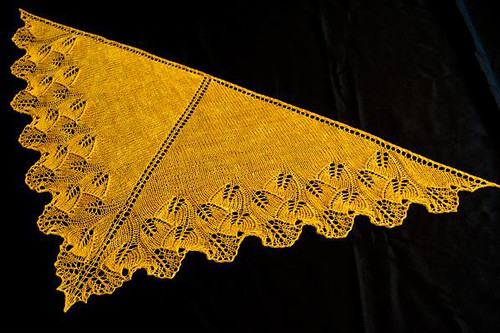 |
| Ginkgo shawlette (pattern available on Ravelry; photo © FHCreations) |
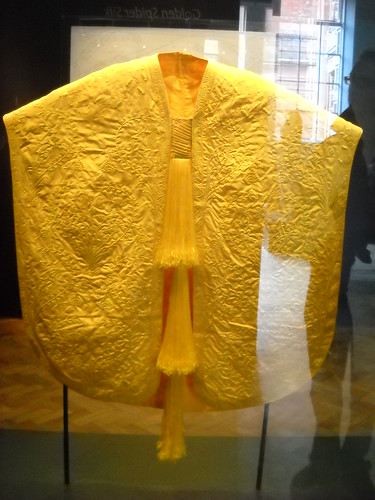
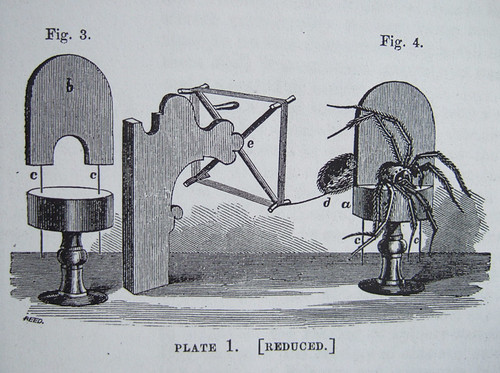
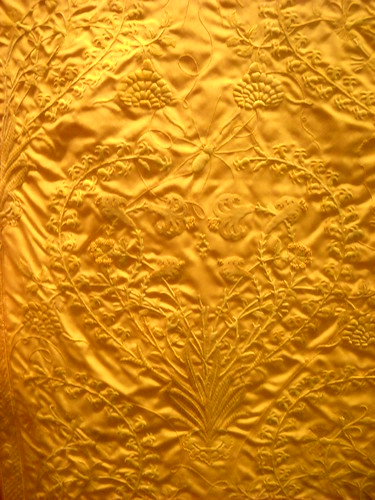
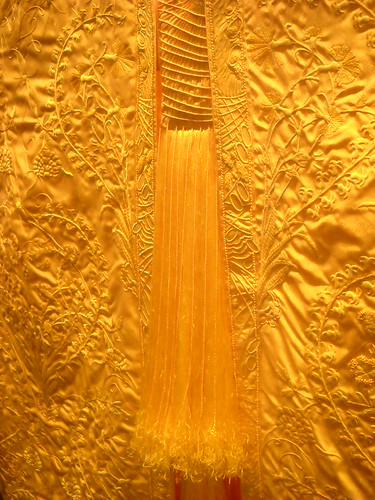
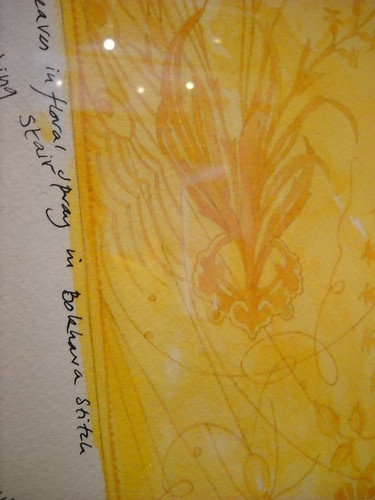




No comments:
Post a Comment